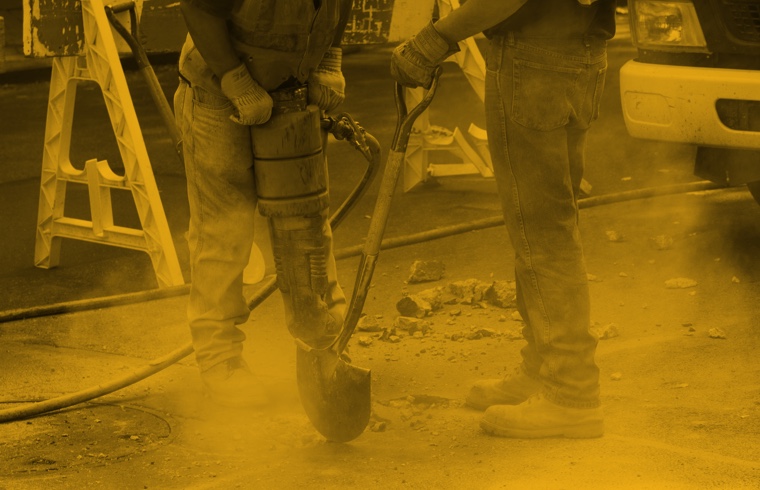Construction Safety Week, beginning on May 1st, 2023, and culminating on May 5th, 2023, provides an opportunity to facilitate a safety culture and empower those involved to continue utilizing mechanisms, such as insurance, to minimize risk exposure when possible. The theme for this year, “Strong Voices. Safe Choices.,” best embodies this message. The following claims examples illustrate how certain commercial general liability (“CGL”) policy exclusions, such as the pollution exclusion, may operate. Sometimes, what constitutes a pollutant is not always obvious; for example, a pollutant may be the result of a naturally occurring condition.
Claims Examples
(1) Headwaters Resources, Inc. v. Illinois Union Ins. Co.
Headwaters Resources, Inc. and VFL Technology Corp. (“Headwaters”) were involved in golf course construction, resulting in 1.5 million tons of fly ash allegedly being dispersed. In response, the Virginia homeowners affected by this dispersal sued Headwaters, arguing that they suffered both personal injury and property damage from the fly ash generated. Those affected explained that the fly ash was taken to an open pit, which was located next to the residential neighborhoods in question. It was alleged that groundwater was impacted, and a strong smell of ammonia developed as a result. The Court concluded that the applicable CGL policies excluded coverage, citing the pollution exclusion, and denying that any ambiguity existed. As the Court noted here, “And of course, Headwaters can purchase additional special purpose coverage for environmental pollution liability that provides more comprehensive coverage for the unique risks associated with its business model.”
(2) Devcon International Corp. v. Reliance Insurance Co.
An airport expansion project involved the Virgin Islands Port Authority (“VIPA”) contracting with a general contractor, Virgin Islands Cement (“V.I. Cement”), a Devcon subsidiary, to expand its only runway. During construction, significant amounts of dust and engine fumes were generated by the project, and nearby residents complained of drinking water contamination, personal injury, and property damage. Because the airborne solids and fumes, encompassing the engine fumes and dust complained of here, were at issue here the Court determined that the pollution exclusion would work to deny coverage under the issued CGL policy.
(3) Love Lang v. FCCI Insurance Company
A recent 2021 case examined whether dust generated as part of a construction renovation project that negatively affected an apartment resident’s health would be covered under a CGL policy in place that contained a total pollution exclusion. Prior to his passing, Mr. Love, the former apartment resident, sued the apartment building owner, the contractor, and others involved, citing his increased health problems that resulted from the construction dust generated outside of his apartment that ended up within his apartment. Mr. Love had suffered from emphysema, which reduced his lung capacity function to only 20 percent and which he argued was further reduced by the repeated dust exposure even after complaints were made. The Administrator of the Estate was able to reach a consent settlement in the amount of $1,203,084.39. The Court found that the total pollution exclusion precluded coverage for the construction dust, which would fall under the definition of a pollutant under the CGL policy here. Even though the construction dust generated was the “but for” cause of the injuries complained of here, the pollution exclusion prevented coverage from being available under the CGL policy.
Contractor Pollution Professional (CPP) Insurance
There are many unique business models at work today. Each business model presents its own challenges, and varying coverage needs are present as a result. The purpose behind Contractor Pollution Professional (CPP) Insurance is to allow for a coverage vehicle for situations that involve the performance of professional services and where various pollution conditions may exist. According to the Associated Builders and Contractors’ Construction Spending and Employment Forecast, $1 billion of additional construction revenue translates to 3,620 jobs generated. Based on these findings, this means that the construction industry will need to hire 546,000 workers in 2023 alone to keep up with this demand. In keeping with this increase in hiring need across the construction trades, contractors and design professionals also need to further examine which types of insurance coverage options would be best suited to their needs. Below, we are highlighting some of the available forms of coverage under a Contractor Pollution Professional (CPP) Insurance policy.
The following illustrate some of the top six features available under Contractor Pollution Professional (CPP) Insurance:
(1) Building Information Modeling (BIM): When beginning a project, both contractors and design professionals may be interested in utilizing BIM design assist programs. Under a CPP policy, a coverage offering for BIM is available. This type of modeling may help to reduce risk exposure on-site.
(2) Project Specific Basis: Some may only be interested in coverage strictly on a project specific basis. CPP is available for those interested in that form of coverage.
(3) Pollution Liability: Through endorsement, site pollution liability coverage is available. First and third-party pollution transporters can also access coverage options under a CPP.
By: Jessica Cambridge

Leave a Reply